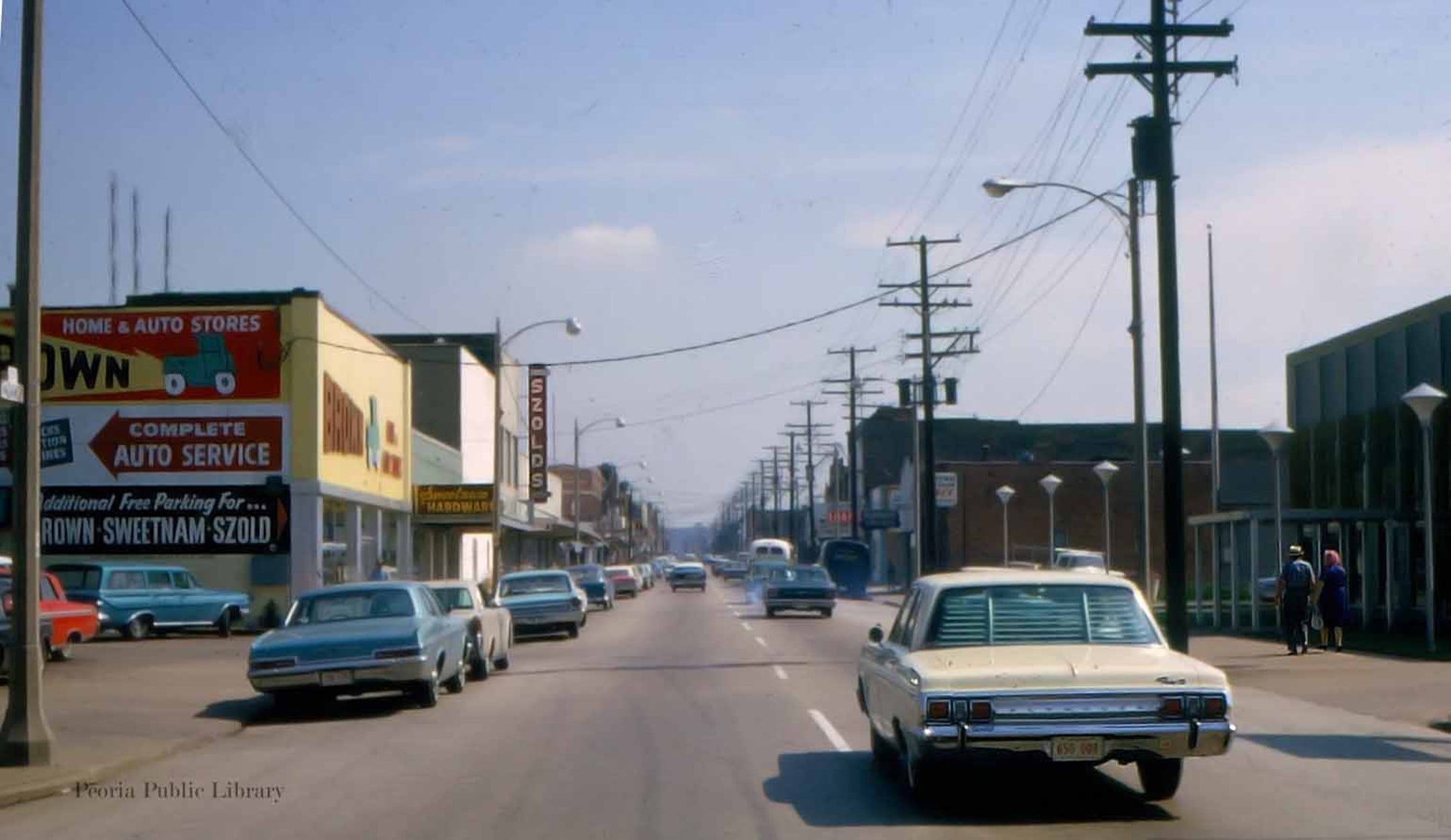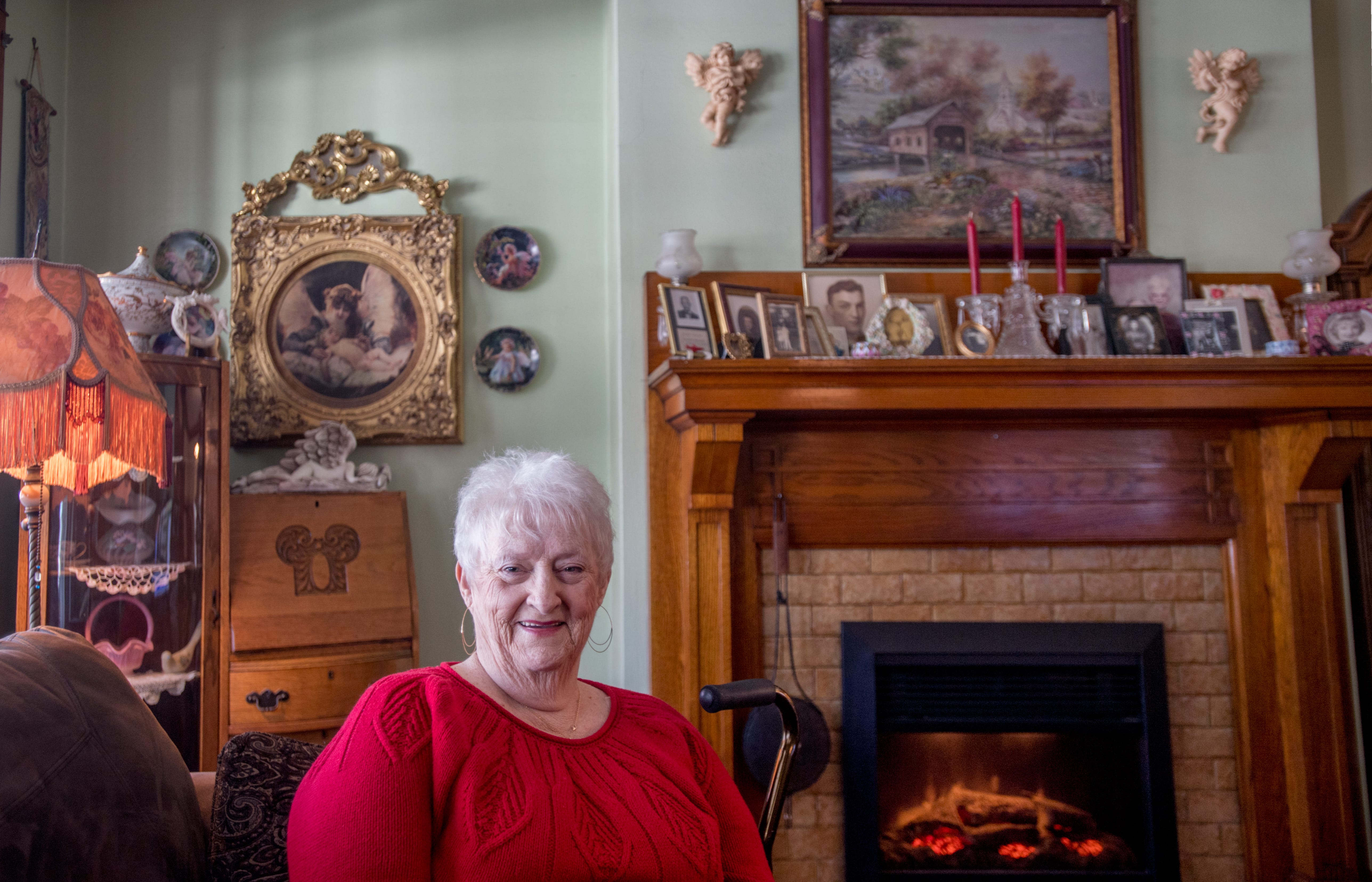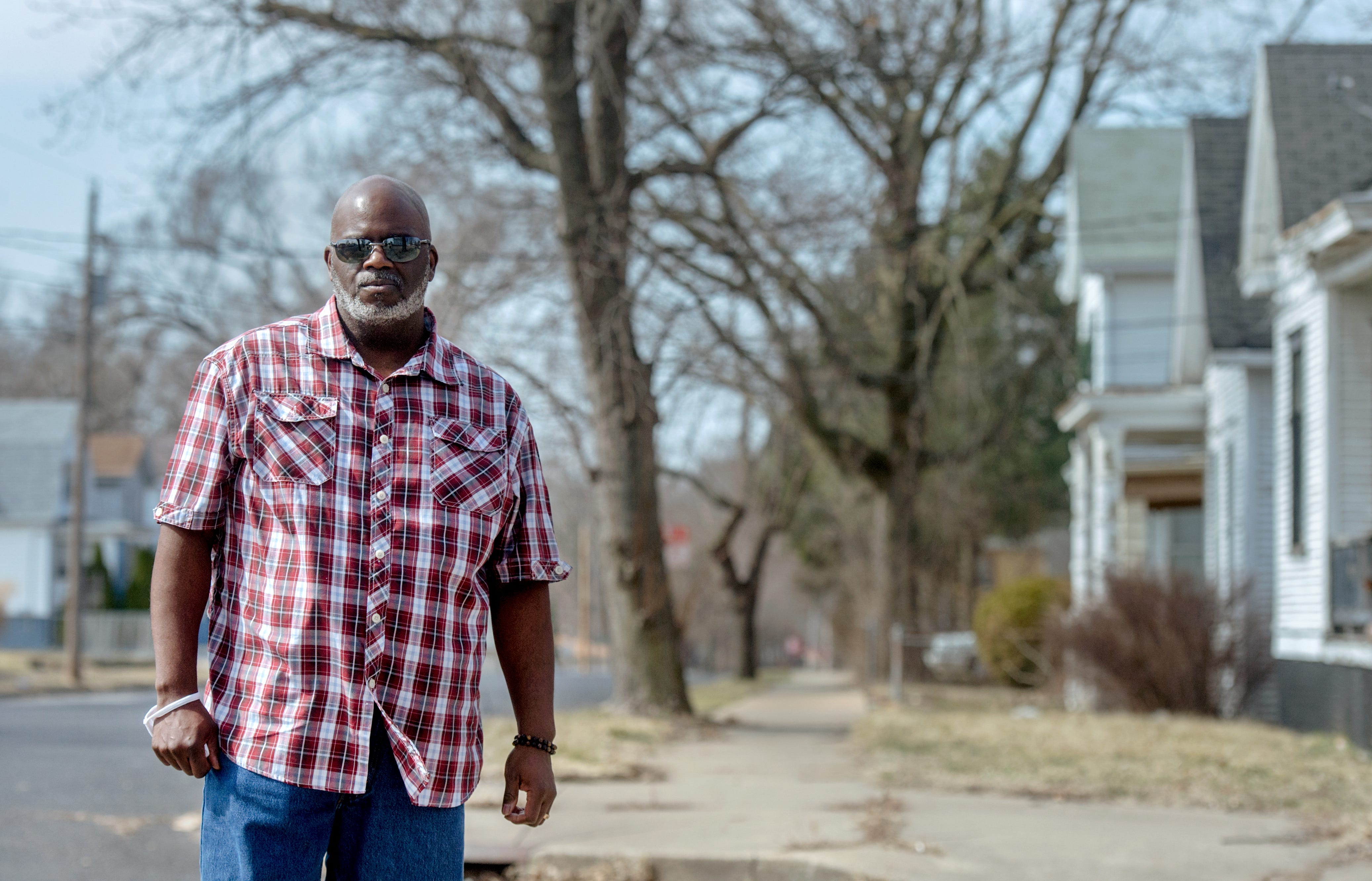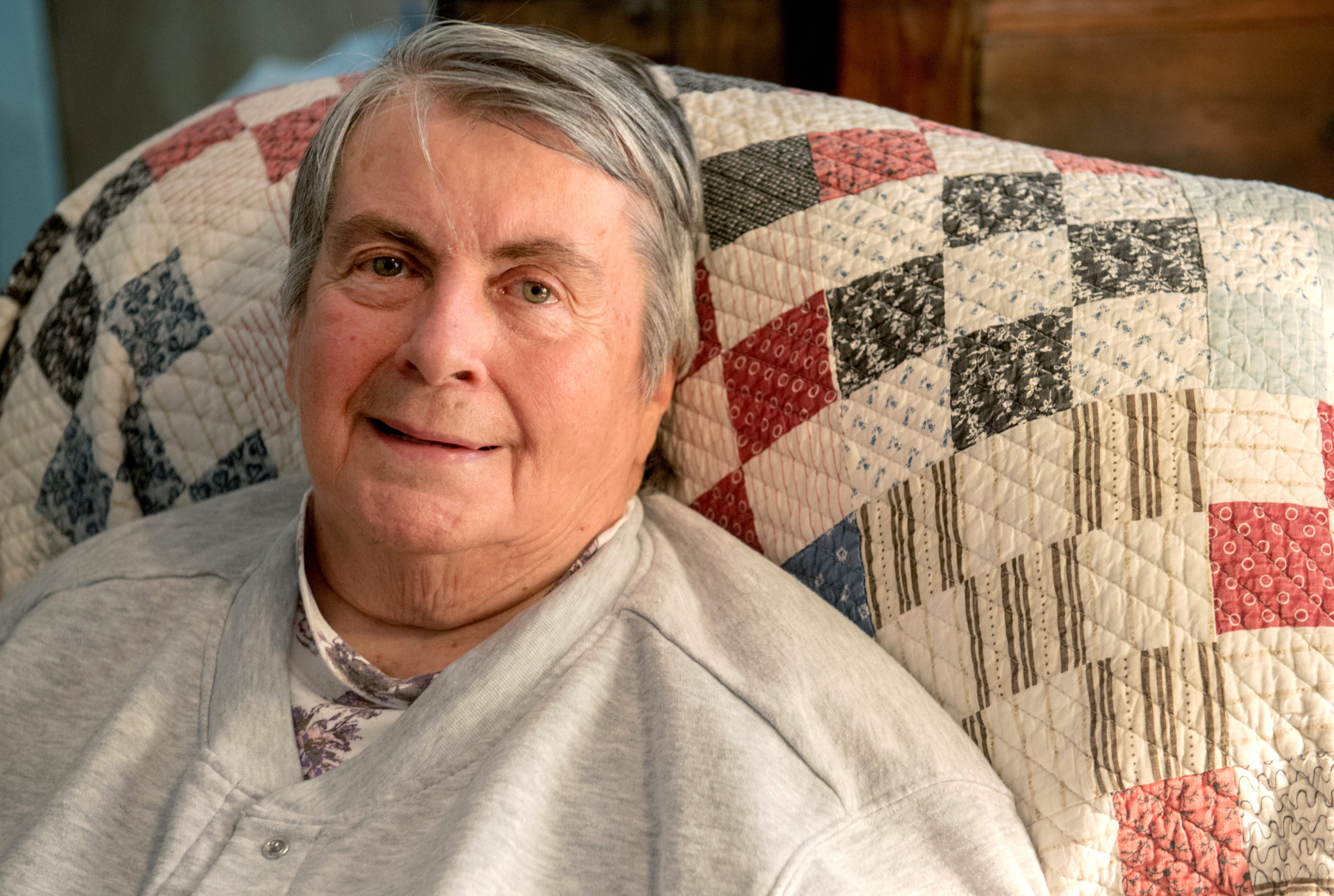
For decades, Clare Hutchinson has shrugged off the insults.
The comments are as snide as they are repetitive, along the lines of "You live in South Peoria? For real? Isn’t it dangerous?" Or, "The South Side? I’d never go there!"
Hutchinson, 76, lives in her childhood home on West Starr Street. She turns no blind eye to longstanding woes in her neighborhood. She and her husband used to run a convenience store, where they enjoyed the daily chatter with customers and witnessed the creep of drugs in the '70s and ‘80s.
In a 1985 Journal Star profile of South Peoria, residents bemoaned a lack of key needs, including new housing, commercial investment and city upkeep. Still, they recalled the glory days of the neighborhood — Hutchinson’s childhood — and expressed frustration that outsiders unfairly painted South Peoria as hapless and hopeless.
Hutchinson, 40 at the time, said, "I think when people think about the south end, they think about the crime … That’s a shame. There are a lot of good houses, a lot of good kids, a lot of good schools, and good people. And it’s a shame they’re not getting any recognition."

To her these days, it’s more of a shame that South Peoria remains stuck with the same problems as decades ago. Nonetheless, she gets irked when — just like in 1985 — she hears people react in disdain and disbelief when she says she lives in South Peoria. It’s not the same place as her youth, but what neighborhood is?
"It’s changed a lot," she says. "But times have changed everywhere."
She still sees plenty of good in South Peoria, as does LaVetta Ricca. The 82-year-old has lived a half-century at the same address on South Greenlawn Avenue, across the street from her childhood residence. Working from her kitchen and walking through the streets, Ricca earned a reputation as a loud and tireless neighborhood advocate, yelling for attention and help as South Peoria fell further and further behind the rest of the city.
Yet, like stoic sentinels observing decades of the good and bad of South Peoria, Hutchinson and Ricca remain entrenched in their longtime residences, not of necessity but choice. Nearby houses have crumbled around them, as has the once vibrant neighborhood’s former way of life. But, even in the twilight of their years, they wouldn't dream of living anywhere but what locals forever have called the "south end."
"If I didn’t care about it, I wouldn’t live here," Hutchison says flatly.
Ricca vows from her living room, "I’m staying ‘til they carry me out. My heart is here."
Golden era of South Peoria
Hutchinson and Ricca are anchors amid an outward flood. Since the 1970s, as the rest of the city has remained relatively static in population, South Peoria has lost more than 40% of its residents. But Ricca and Hutchinson, though aware of problems around them, still see upsides in South Peoria — including a nostalgic glow from a heyday that only a small number of like-minded stalwarts can recall.
"It was the most wonderful place in the world to grow up in," Ricca says.
Like a generation earlier, their South Peoria of the 1940s and 1950s was a bedrock community of middle-class families supported by steady, blue-collar employment at the Caterpillar Tractor Co., R.G. LeTourneau Co., Hiram Walker & Sons Distillery and other manufacturers. Families stayed put, and adult offspring often would remain in the neighborhood.

Part of that cementing lure was convenience. Retailers were everywhere, highlighted by the mighty Szold’s, on Adams Street. Restaurants, bakers, flower shops and beauty parlors dotted the neighborhood. Aside from a father headed to work, residents usually didn’t need a car to get to where they needed to go.
"We had it all," Ricca says. "We had everything."
Mom-and-pop groceries and neighborhood taverns could be found at corner after corner. The 1940 city directory lists almost 300 groceries and 265 taverns in Peoria, at least a third of which were in South Peoria. They not only sold food and drink but served as community touchpoints. Residents would walk over not just for a can of peas or a mug of beer, but for the latest news and gossip about the tight, secure world around them.
"You knew everybody, and everybody knew you," Hutchinson says. "It was like a little city of its own."
Kids had plenty to do. Aside from athletic programs at many of the parochial schools, youths flocked to activities at Carver Community Center and swimming at the Logan Park pool. Parks brimmed with people, and parents didn’t blink if their kids continued to play outside as the sun went down.
"In the summer, when it got hot, we would sleep on a blanket in the front yard," Ricca says. "We didn’t worry about anything happening."

Most people owned their homes. Still, especially for new couples, rentals could be found, including the Harrison and Warner housing projects, built in the '30s and '40s as starter residences for working-class families. Even into the 1970s, housing and the rest of South Peoria remained stable, says the Rev. Marvin Hightower, president of the Peoria chapter of the NAACP.
"It was a community," says Hightower, 56, who grew up on West Hurlburt Street and now lives in Far North Peoria. "Everybody knew everybody.
"It was a great time to be in South Peoria. Actually, it was probably the end of the great time to be in South Peoria."
Shifting landscape in Peoria
An exodus from South Peoria was sparked by an aging and deteriorating housing stock. As early as 1964, what was known as the "Near South Side" — the area just south of downtown — was deemed as rife with “blight” by civic agencies because of run-down housing.
Such areas, activists said at the time, were to be blamed for about 50% of all arrests, including major crimes and juvenile delinquencies. According to the U.S. Census at the time, Peoria led cities statewide in terms of proportion of dilapidated housing.
Essentially landlocked, South Peoria had no place to expand with new housing. The 1964 annexation of Richwoods Township — now part of north Peoria — allowed vast areas of former farmland to host modern housing developments.
The lure was too irresistible for many South Peoria residents, especially those just starting families. Often, they sold their residences — some in families for generations — to profiteers seeking to rent out homes while making as little investment as possible. The move away from owner-occupied housing dealt a crushing blow to South Peoria, Hightower says, because many renters did not care about the neighborhood.
"If you own your own home, you go the extra step with upkeep," he says.
Amid these downturns, businesses started to close up and move away. South Peoria lost its charm and self-sufficiency.
"It just started, little by little, going down," Ricca said.
A visible sign of the erosion could be seen in an infiltration of drug dealers. Hutchinson and Hightower recall drug traffic increasing into the 1970s. Then crack exploded in the 1980s throughout urban communities in the United States. The epidemic hit South Peoria especially hard, Hightower says.
From 1978 to 1994, Hutchinson and her husband ran Starr Street Dairy, what she calls a "convenience-like" store. In addition to staples, they sold meat, diary and liquor. Plus, they'd offer seasonal items, such as bedding plants in the spring and fresh-cut trees at Christmastime.
"It was a little bit of everything," she says.
They enjoyed the interaction with customers, many of whom were regulars living nearby. The couple was invested in the community, often by supporting fundraisers for youth football programs and preparing pregame meals for the football team at Manual High School.
But gradually, they saw drug dealers appear on the streets more and more. The streets began to lose their carefree playfulness: residents increasingly looked over their shoulder and parents called their kids home earlier. It was another reason for more residents to decide it was time to leave South Peoria.
"It just started, little by little, going down," Ricca said.
She and Hutchinson believe the city started to ignore South Peoria, choosing instead to focus energies and money on other areas of town. Basic necessities, like fixing potholes and maintaining sidewalks, often fell to the wayside in South Peoria, they say.
"It seemed the city didn’t do the things it was supposed to do," Ricca says.
Present-day Peoria problems
Longtime South Peorians hung in there, hoping for a rebound for the area.
"I think people really tried to get things changed," Hutchinson says. "But it got so bad, people said, 'To hell with it' and got out."
But not Ricca and Hutchinson. Just as with their South Peoria forebears, they’re staying pat.

In Ricca’s case, she worries about the family line coming to the end in South Peoria. LaVetta Aguilera, an adult granddaughter and the fourth of five generations of Riccas in South Peoria, is raising her three kids in West Peoria. The 37-year-old single mom, who graduated from Manual High School, relocated from her old neighborhood because she found a solid house up the bluff.
"West Peoria isn't so different than the south end," says Aguilera, who studied at Bradley University before becoming a nurse. "Plus, I'm still close to my grandmother."
Aguilera still maintains connections to South Peoria. She is on the board for Manual's alumni association and she plans to offer career talks to elementary pupils.
"I'm looking at ways to help the south end," she says. "My heart is still very much in that community."
Nonetheless, with a light chuckle, she acknowledges that living anywhere but South Peoria is a major life change for anyone with Ricca blood.
"If my grandma had her way, I'd never move away," Aguilera says.
Still, LaVetta Ricca does not begrudge her granddaughter seeking the best family opportunities, including housing outside South Peoria.
"I understand it," Ricca says quietly. "I’m not going to throw a fit."
Meantime, Hutchinson — whose sharp bungalow sits not far from tumbledown residences — lives with an adult daughter who returned home after a divorce. Long ago, Hutchinson learned to take the good with the bad in her neighborhood. For instance, she finds gunfire unremarkable. She barely noticed one night as five rounds exploded in the distance.
"It’s kind of normal to me," she says.
Still, as she points out, her house has never been targeted for a break-in or other crime. Plus, she expressed delight in many of her neighbors, including one who always shovels snow from her driveway without even asking.
"There are good neighbors," Hutchinson says. "There are good people."
Phil Luciano is a Journal Star columnist. He can be reached at pluciano@pjstar.com and (309) 686-3155. Follow him on Facebook and Twitter.
MORE IN THIS SERIES
- 7 things to know from our series series on housing, education, food deserts in South Peoria
- A once 'wonderful' part of Peoria eroded with blight and crime. Why these residents stayed
- How the Peoria housing market became 'so segregated' and why it persists to this day
- Do gifted Peoria students miss out on educational programs because of where they live?
- Homegrown leadership for Manual basketball helps youth navigate surroundings
- With no imminent cure for a South Peoria food desert, the community is filling the gaps
- How a South Peoria subdivision rose from the dust of unfulfilled promises
- ‘Deal with the ugliness’: Getting to roots of South Peoria’s decline may be key to its rebirth
- Why we decided to do a series on the past, present and future of South Peoria